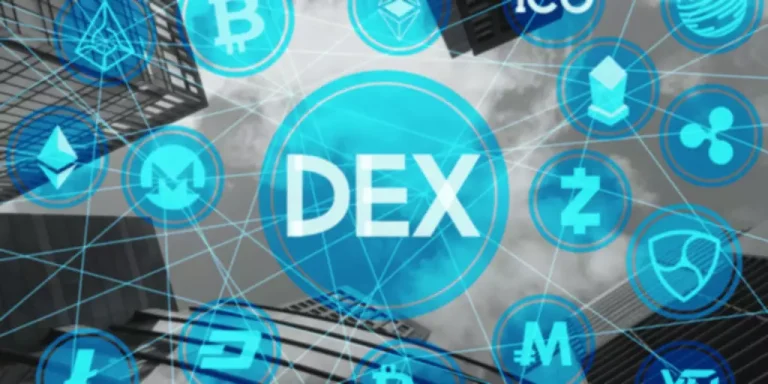There are varied liquidity swimming pools for particular trading pairs, customers of DEXs can select to turn into a liquidity provider (LP) by depositing a sure predetermined ratio of the chosen buying and selling pair. It’s important to notice you could also be a market taker even when utilizing a limit order. Besides market makers, it’s also essential to say one other market participant – liquidity suppliers, who, however, favor to work by forming spreads.

Market Makers Vs Takers: What Is The Difference?
An trade is sort of a market where individuals put their goods on the cabinets. As talked about, the traders that flock to an exchange act as both makers or takers. Buying And Selling or investing in crypto property is dangerous and should result within the loss of capital as the value might fluctuate. If you have ventured into investments, whether or not in cryptocurrencies or the inventory market, you’re doubtless acquainted with the maker vs. taker dichotomy.

A market maker (MM) is a financial intermediary—often an institution—that instantly offers liquidity to financial markets. They achieve this by constantly quoting each a buy and a sell price for a given safety or instrument. These entities don’t primarily aim to speculate on market direction; their primary function is to facilitate buying and selling activity for others. A market order is an instruction to purchase or promote a sure quantity of a cryptocurrency on the current market value. Market orders are utilized by merchants who prioritize immediate execution over the value at which the commerce is executed.

Individually, underneath the maker taker model, exchanges frequently offer rebates or incentives to market makers because they supply liquidity. Market liquidity is doubtless certainly one of the most necessary features of a highly environment friendly market. A market with high liquidity is one the place assets can be bought and bought with ease at a fair value. Primarily, there’s a high demand from traders who want to personal the asset and there’s a excessive provide from merchants that wish to sell the asset. Market takers are traders or traders who withdraw liquidity from the market by placing orders that get executed right away, like Market orders. Essentially, they’re taking liquidity from the market as the trade fulfills their orders at present market prices from the order book.
What Is A Market Maker (mm)?
Additionally, other DEXs like Uniswap use a solution referred to as automated market makers (AMMs) to attach makers and takers. A “maker” assumes the accountability of initiating either a purchase or a sale order, whereas a “taker” promptly acts because the entity executing that very order. Market makers operate by setting a spread between the purchase and sell prices of an asset. Many exchanges generate a considerable portion of their revenue by charging trading charges for matching customers. This means that any time you create an order and it’s executed, you pay a small quantity in charges. But that amount differs from one change to a different, and it could additionally range relying on your buying and selling dimension and position.
Market takers are these https://www.xcritical.in/ in monetary markets who act on present costs rather than setting them. In Contrast To market makers, they don’t present quotes but as an alternative execute trades based mostly on present market circumstances. Their strategy involves taking advantage of opportunities quite than creating market liquidity.
- In Contrast To MMs, who supply liquidity, MTs devour that liquidity by putting orders that match existing bids or provides.
- Market makers face steady danger exposure as a result of holding stock and sustaining two-sided quotes.
- Such orders enhance the market’s liquidity as a result of they wait in the order guide before the transaction happens.
- Market takers are traders or buyers who withdraw liquidity from the market by inserting orders that get executed immediately, like Market orders.
- Many buying and selling platforms cost a what’s a taker payment for orders that consume liquidity.
Alternatively, small traders can become makers, simply by inserting certain order sorts that aren’t executed instantly. Each market participant falls into no much less than one of these categories – certainly, as a trader, you’ll most likely act as both at some stage. Makers and takers are the lifeblood of many trading platforms, and their presence (or lack of it) separates sturdy exchanges from weak ones. Market makers often utilise sophisticated algorithms and strategies to manage their positions and mitigate risks. Their aim is to profit from the bid-ask unfold, the distinction between the shopping for and promoting prices. These profits incentivise them to maintain a relentless presence out there.
Makers and takers employ a plethora of strategies to seek out earnings, typically considering market alerts particular to their roles. However, opinions on the effectiveness of these strategies can range, with some viewing them as bordering on the mystical Initial exchange offering rather than the sensible. Earlier Than we are in a position to delve into makers and takers correctly, it’s necessary to speak about liquidity.
Some exchanges would possibly even waive charges for market makers to incentivize liquidity provision, acknowledging its vital position in upholding the change’s operational efficiency. Smaller spreads additionally imply it’s simpler and cheaper for merchants to make offers rapidly. The makers create buying or selling orders that aren’t carried out instantly (e.g., “sell BTC when the price hits $15k”). This creates liquidity, meaning it’s easier for others to immediately purchase or promote BTC when the condition is met. On VALR, taker fees for spot crypto-to-crypto pairs like BTC/USDC begin at 0.100% for Tier 1 users and reduce with greater buying and selling volumes all the way down to zero.035%. When you place a market order (an instruction to buy or promote instantly at the current market price), you are appearing as a market taker.
Many buying and selling platforms cost Market Makers vs Takers a what is a taker charge for orders that eat liquidity. Additionally, takers must overcome the bid-ask spread and may incur costs from slippage. They accept the prices established by market makers or out there within the order book to execute their trades instantly. Their primary operate is to complete transactions by interacting with existing orders, thus facilitating the trade of property. AMMs get rid of the necessity for centralized exchanges and traditional market-making strategies that might sometimes result in worth manipulations and liquidity crises. The equivalent of trading pairs normally discovered on centralized exchanges is liquidity swimming pools for DEXs.
